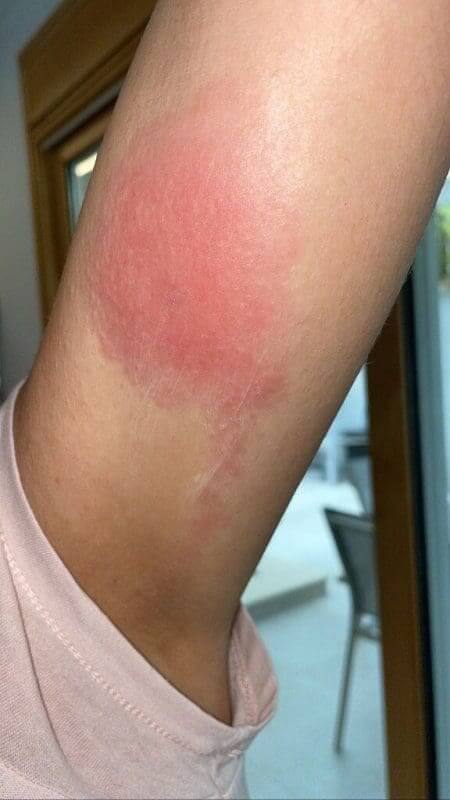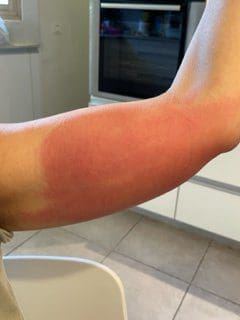
Brown recluse spider bites in children and adults
I always thought of this as an esoteric topic, until a good friend of mine got a spider bite, and I decided I should write about it.
Before I dive into the topic:
The brown recluse spider can be found in the southern part of North America—south of southeastern Nebraska, southern Iowa, Illinois, Indiana, southwestern Ohio, central Texas, western Georgia, and northern Kentucky. Other species of this spider can be found in the Mediterranean region but are also distributed worldwide, including in Western Asia, parts of Europe, North Africa, Japan, Australia, the Pacific Islands, and North America.
I have a separate post about all the other bites caused by annoying insects, where I cover different types of bites and their complications. You can find it in the link here. I suggest you read it, as the approach to insect bites and spider bites is quite similar.
Shall we get started?
What do we know about the brown recluse spider and when does it bite?
The scientific name for this spider is Loxosceles reclusa. As its name “reclusa” implies, this spider prefers to isolate itself in undisturbed places. It has 3 pairs of eyes, whereas most spiders have 4 pairs of eyes.
This spider is also nicknamed the “violin spider” because the mature Loxosceles reclusa, which is about 2-3 cm in size, has markings on its back resembling the shape of a violin.
This spider tends to be more active at the end of spring and the beginning of the summer season, especially at night, when it can hide in clothes and sheets (typically those stored at the bottom of closets).
The Mediterranean recluse spider (Loxosceles rufescens) is a species of the Loxosceles spiders that originated in the Mediterranean region but is now distributed worldwide, including in Western Asia, parts of Europe, North Africa, Japan, Australia, the Pacific Islands and North America. It is almost indistinguishable from Loxosceles reclusa.
Do these bites hurt? Where on the body do they occur?
Usually, one does not feel the initial bite at all.
Most of the bites occur in the upper parts of the arms (see the first image), the chest, or the inner parts of the thigh.

What can a brown recluse spider bite lead to?
This bite can lead to one of three different clinical presentations: a local skin reaction, a systemic reaction, and/or an allergic reaction.
Local (skin) reactions to a brown recluse spider bite
The skin reaction to a brown recluse spider bite includes a red rash surrounding the initial bite area that can spread. In about half of the cases, a black discoloration will also appear, indicating necrosis of the area. Many times, this is our sign that the bite was caused by this spider.
Blistering, warmth, and a burning sensation may follow. The rash typically spreads, and the redness worsens within a few days, as seen in the second image.
Systemic reactions to a brown recluse spider bite
This refers to any symptoms that the body may experience other than the skin reaction. It can include fever, chills, vomiting, joint pain, hemolysis of red blood cells, kidney involvement, and other complications.
These potential systemic reactions are the reason it is important to monitor symptoms such as a change in the person’s urine color (to a darker color) and consult with a physician if such changes occur.
These potential systemic reactions are the reason why it is important to monitor symptoms such as a change in the person’s urine colour (to a darker colour) and to consult with a physician if such changes occur.
Allergic reactions to a brown recluse spider bite
Allergic reactions may consist of a rash, such as urticaria or angioedema (swelling of the hands and feet) and more.
What exactly does this bite lead to – an inflammation, infection, or allergic reaction?
It turns out the spider’s venom contains several toxins that cause these severe reactions described above. Secondary infections may occur at the site of the bite, but these are not very common.
How can you determine whether a wound/bite was caused by a brown recluse spider?
This can be done in one of two ways:
a. If the person with the wound saw the spider – then it is easy and straightforward.
b. If the person does not recall seeing a spider treading on them then the physician should be familiar with the characteristic skin manifestations in order to make the diagnosis. Don’t forget, there are other skin conditions that may look similar, especially skin infections.
When the patient presents with a systemic rash/reaction, and does not recall any interaction with spiders, the diagnosis becomes even more challenging.
How are brown recluse spider wounds treated?
First of all, it is important to determine whether the wound was caused by a brown recluse spider bite and not overlook other possible causes, such as skin infections.
The skin surrounding the bite should be cleaned properly with water and soap, and the child/adult should be monitored.
There are no other specific treatments or preventive measures required.
If the child/adult is not vaccinated for tetanus, they should receive a tetanus vaccine, as explained in the post here.
A couple more important thoughts:
Are antibiotics required? Similar to other bites, bites caused by the brown recluse spider are not infectious and usually do not develop into bacterial infections. Therefore, antibiotics are not needed. However, it can often be difficult to distinguish between a bite and an infection, so many patients end up receiving antibiotics.
Are steroids required? I tend to prescribe topical steroids for patients. Systemic steroids are reserved for more complex cases, including allergic reactions.
In summary, these bites are unpleasant, to say the least. They are often difficult to identify, but the good news is that, most of the time, patients recover without complications or the need for specific treatment.
Just make sure not to miss a different, more dangerous diagnosis that may only resemble a bite…
For comments and questions, please register
